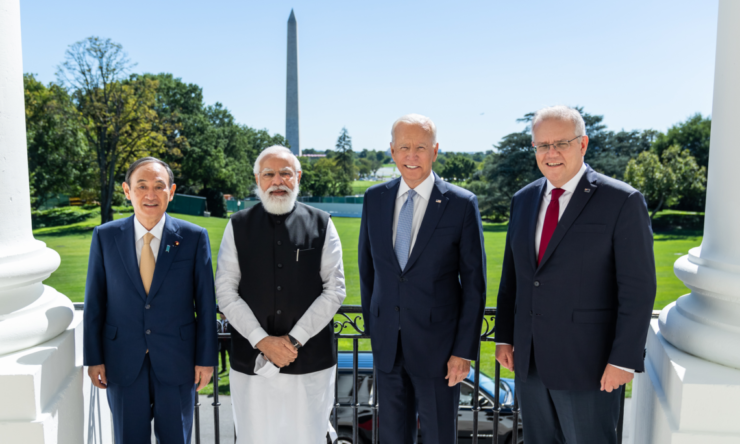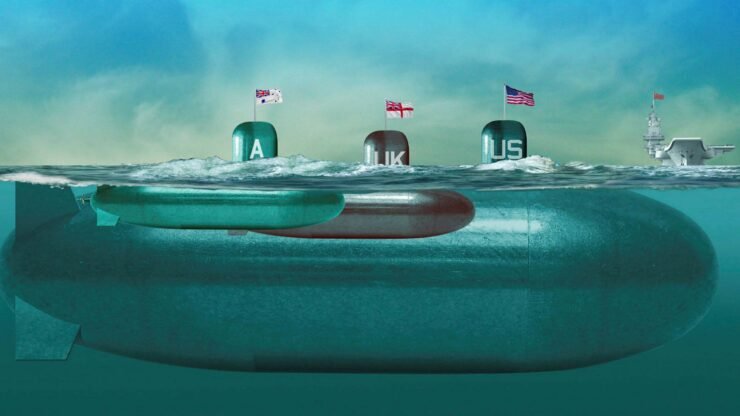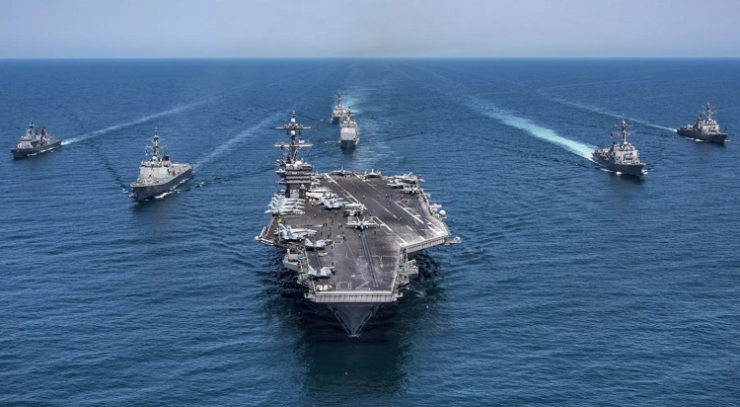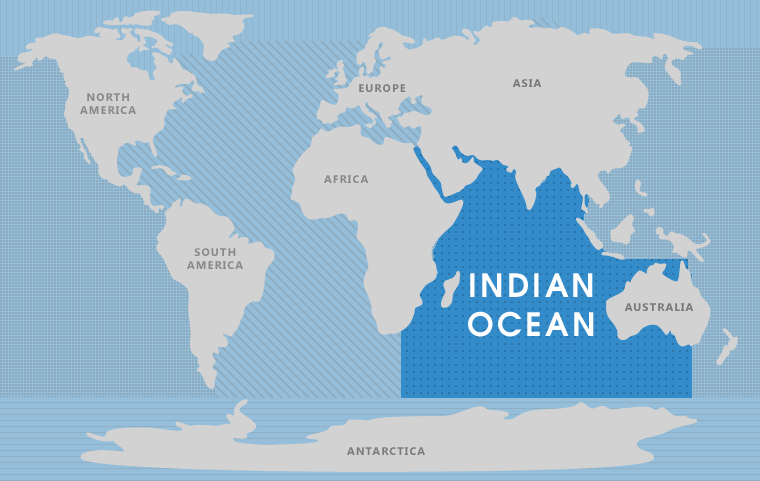
One of the first policy decisions, impulsive or otherwise, taken by Donald Trump, was to withdraw from the Trans-Pacific Partnership (TPP). This, however, did not mean that USA had decided to disregard Asia. On the contrary, it continued to be more active than the previous administration, and has further increased its attention thereafter. The current Asia policy appears more unvarying than the Obama administration’s Asia policy, focussing on two major issues, namely: containment of China in all domains, and ensuring American dominance in the region, as an extension to maintaining its position as the sole global power. It is with this strategic rebalancing in mind that new alliances have been initiated in the region by USA.
QuadW (Quadrilateral West)
The most recent of the multilateral alliances, which has been proposed is between Israel, the United Arab Emirates (UAE), and USA. It has not been named as QuadW as yet, but it seems to be an appropriate term for it, since India was invited to join and attend the only meeting so far of the foreign ministers of these nations, on October 20, in a hybrid conference, with the physical presence of the Indian and Israeli counterparts (the other two attended virtually). This seems to be a follow-on of the Abraham Accords that was signed in August 2020 in Washington DC, as a trilateral, and reviewed just prior to the announcement of India’s inclusion in it – making it a foursome, or as this author would like to call it – QuadW.
Strictly speaking, the Middle East does not really form a part of the Indo-Pacific, yet, this new alliance is important for it is an indication of the intent of President Biden’s administration of containing China wherever possible in multiple regions and multiple domains. While the AUKUS, announced earlier as an indication of increased involvement of the US in the Indo-Pacific, has strengthened the existing QuadE (Quadrilateral East), the new alliance shows that the spread of China’s influence in the Middle East is also considered significant to be curbed.
India has shown more enthusiasm for the QuadW than it did initially for the QuadE. The QuadE, almost withered away in 2007-08, just after it was established with the withdrawal of Australia, and was dormant thereafter for almost a decade, notwithstanding the bilateral/trilateral naval cooperation exercises between the members. It was only in 2020 that all four members’ navies participated in the exercise for the first time. A brief resuscitation in 2017, with five meetings between 2017 and 2019 was followed by the border confrontation in Galwan in the summer of 2020, and the continued aggressive probing incursions by China, all along the LAC (Line of Actual Control). India then realised the need to stand up to China head-on, with whatever help that could be available through multi-lateral alliances, be they towards the East or West of it.
India has always tried to follow a middle path in its diplomatic relations maintaining equidistant relationships and avoiding making difficult choices, as a legacy of its non-alignment policy. Consequently, some of its actions have been viewed with suspicion or mistrust by Western nations, especially USA. This, however, is a misconstrued conception in general, and of its recent decisions in particular. The US has had cordial or good relations with many nations across the globe, but India has not always been in the list. It is not so the case now. Both USA and India have realised the benefits of getting into a partnership, not just in the Indo-Pacific, but in other regions as well. The partnership is now not restricted to just defence purchases and cooperation, but includes other areas too. USA realises the value of its relationship with India due to its visible influence in many nations and hence, its importance as an offset against China. India too, recognises the need of a stable partner as USA, to counter China’s spread across continents despite the US withdrawal from Afghanistan in August being portrayed by Chinese propaganda as a lack of US capabilities and betrayal of allies.

That nations are getting together, both in the Indo-Pacific, as the QuadE, or in the Middle East, as a QuadW, is an indication of the understanding of China’s challenge, not just in the political or military realms, but in the economic arena too. Notwithstanding the fact that both UAE and Israel are close security partners of USA, China has been able to make inroads into both these nations. The inclusion of India in both the quadrilateral groups, are thus, an indication that USA views India as a vital partner for a long struggle to counterbalance China, especially as a part of the QuadW, where India has good bilateral relations with both Israel and UAE.
AUKUS
September 24, 2021, was a historic day, for it is on this date, USA hosted the first-ever physical meeting of the heads-of-state of the QuadE, giving it a much-needed boost. This group was formed in 2007 for cooperation in maritime relief after the Tsunami of 2004, emphasising that this was not going to be a military alliance; although some naval exercises were conducted, but the focus remained on growth and security, with the Indian PM articulating this in 2015, through an acronym, SAGAR – Security and Growth for All in the Region.
Already smarting at the formation of the QuadE, but not unduly displaying its annoyance, China, as was the rest of the region and some other nations, was caught by surprise at the announcement of the formation of yet another group – AUKUS – comprising of Australia, UK, and USA. The announcement came just prior to the meeting of the QuadE leaders, and caused tremors, not just in China and the Indo-Pacific region, but elsewhere too.
Strategists and geopolitical experts put on their thinking caps to analyse the meaning of this tripartite grouping and the effects it would have on the already existing QuadE; would it diminish the importance of the QuadE, being more overt in its aim, or would it run alongside the QuadE? These and many such doubts have arisen in the minds of the experts, the nations affected by it, more so China.
The AUKUS has brought the UK, which hitherto had restricted itself to operations in the Atlantic or the Middle East, more closely into the Indo-Pacific. With an overt mission, this alliance would now be sharing nuclear technology with Australia, assisting it with a fleet of nuclear-powered submarines. It needs to be emphasised here that these submarines would not be nuclear-armed!
Even though the QuadE has expanded its scope, the AUKUS is more defence and security oriented than it. The three nations, in an effort to counter China, have agreed to enhance the development of joint defence capabilities and sharing of technology, foster deeper defence and security integration, industrial bases and supply chains. The announcement of the alliance, has, however, caused geopolitical ripples. Australia has cancelled a contract with France, worth almost $66 billion, to build conventional submarines, causing much heartburn and ill-will towards each other. That story, however, is for another day!
QuadE
India favours a rules-based world and regional order wherein China is made to follow international agreements, more importantly the UNCLOS, and will work diligently towards getting all like-minded Indo-Pacific and European partners towards achieving this aim. The alignment with the members of the QuadE centres on this shared vision, wherein India perceives that the allies can help confront challenges to this vision. India has, thus, persisted with its choices despite Russia’s unhappiness and China’s threats. There are other opinions too, which feel that this is a wrong geopolitical choice considering India’s membership of organisations such as the Russia-China promoted Shanghai Cooperation Organisation (SCO).

The QuadE, as the readers are well aware, commenced as a strategic dialogue in 2007, amongst the four prominent democracies of the region—the US, Japan, Australia, and India. Immediately thereafter, a first-time naval exercise on an unparalleled scale was conducted, not in the usual location of the Indian Ocean, but in the Pacific Ocean. This was seemingly a response to the aggressive Chinese forays in the Indo-Pacific, backed by its growing military and economic power, in the South China Sea (SCS), the East China Sea, and the Taiwan Strait.
While India has been an active participant of all naval exercises in the region, it laid low thereafter for many years after 2007. The pandemic and the aggressive and assertive military and diplomatic behaviour of China within the region and along the India-China boundary, was a wake-up call. India then made choices, more in alignment with USA and its allies, to cater for the Chinese belligerence, despite objections from friends (Russia) and foes (China).
With AUKUS having been announced now, the question then arises—is it worth the effort in the future to pursue the continuation of the QuadE?
The QuadE, as aforementioned, is far from any military pact, instead it is a healthy partnership of democratic nations that advocate and believe in upholding a free and open Indo-Pacific. It has finally got a fresh lease of life with USA now maintaining China in its crosshairs. The moot point is to find synergy between QuadE, AUKUS, EU, and also ASEAN Indo-Pacific strategies. The business of maintaining a power-balance in the Indo-Pacific is now being viewed seriously, both militarily and on the economic front; hopefully the new pacts will have the synergy to contain China’s assertiveness.
Concluding Thoughts
India is the common factor in both the QuadE and QuadW, but not in the AUKUS. India could never be a part of AUKUS given its dislike to joining military security pacts and its strong sense of strategic autonomy; and secondly: India, in the strictest meaning of the term, is not an ally of USA, as Australia is; it is only a strategic partner. However, India is the pivot to any action initiated to counter China, be it through a bilateral, trilateral, or through a quartet, that meets India’s interests.

The Abraham Accords, which saw Israel signing peace treaties in 2020, with key Arab states, notably the UAE, followed by Bahrain, Sudan and Morocco, has formed the base-line for the newly announced QuadW; it essentially is still a trilateral, called “an international forum for economic cooperation”. Although the QuadW has not been officially announced and has no detailed agenda, India joined in for a meeting of the foreign ministers on October 19, 2021. With close relations with UAE, Israel and USA, India was the automatic choice to complete the quartet, rather than any other nation from the Middle East. If QuadE is expected to be used as a counter-balance to China in the Indo-Pacific, the QuadW would be expected to use collective technology resources and skills to build infrastructure, and work together on maritime security. It is opined that USA may have had an ulterior motive to use it as a back-door entry to the Middle East, where all these years, what it has done in the region was based on its oil dependency, and involving itself in unnecessary conflicts.
India was also the automatic choice for the three, since Saudi Arabia has not yet formalised its peace treaty with Israel, although an Israeli flight has landed in Saudi Arabia last month. Iran, of course, is a different story altogether. In the new times of geopolitical and geo-economic connects, India, as a direct stakeholder in both regions, would be able to assist in the creation of a balanced security architecture, to deal with traditional and non-traditional threats.
If the QuadE is reinforcing India’s presence east of the Indian Ocean, the new QuadW would consolidate India’s presence to the west. India can succeed only if it plays its cards well and balances its relations with countries like Iran and Qatar, which have differences with UAE and Israel, without losing sight of China’s advancements in the region. More sooner than later, QuadW will have to disclose its intentions.
Until then, it is watch and wait!
–The writer is an IAF veteran. Views expressed are personal and do not necessarily reflect the views of Raksha Anirveda








